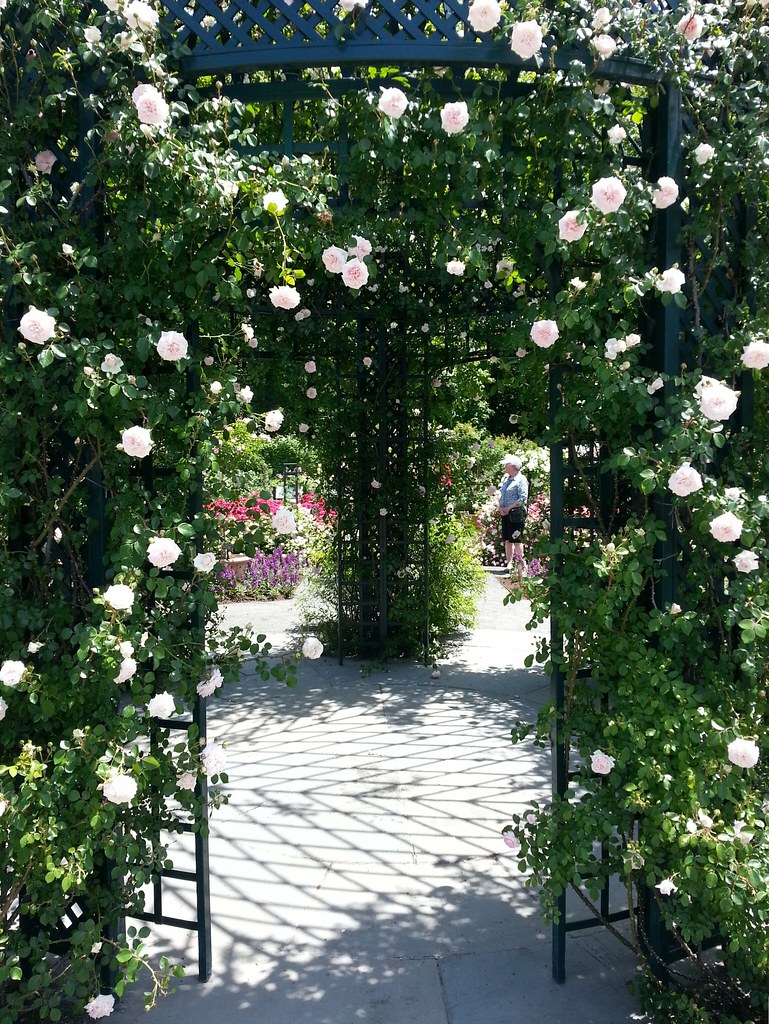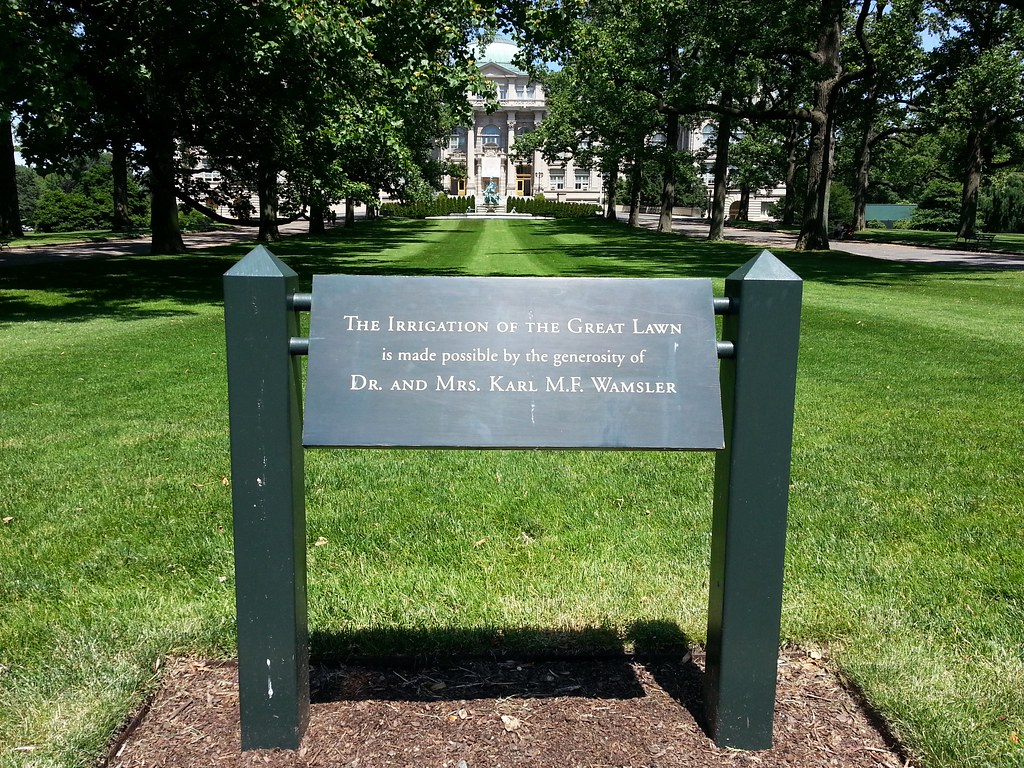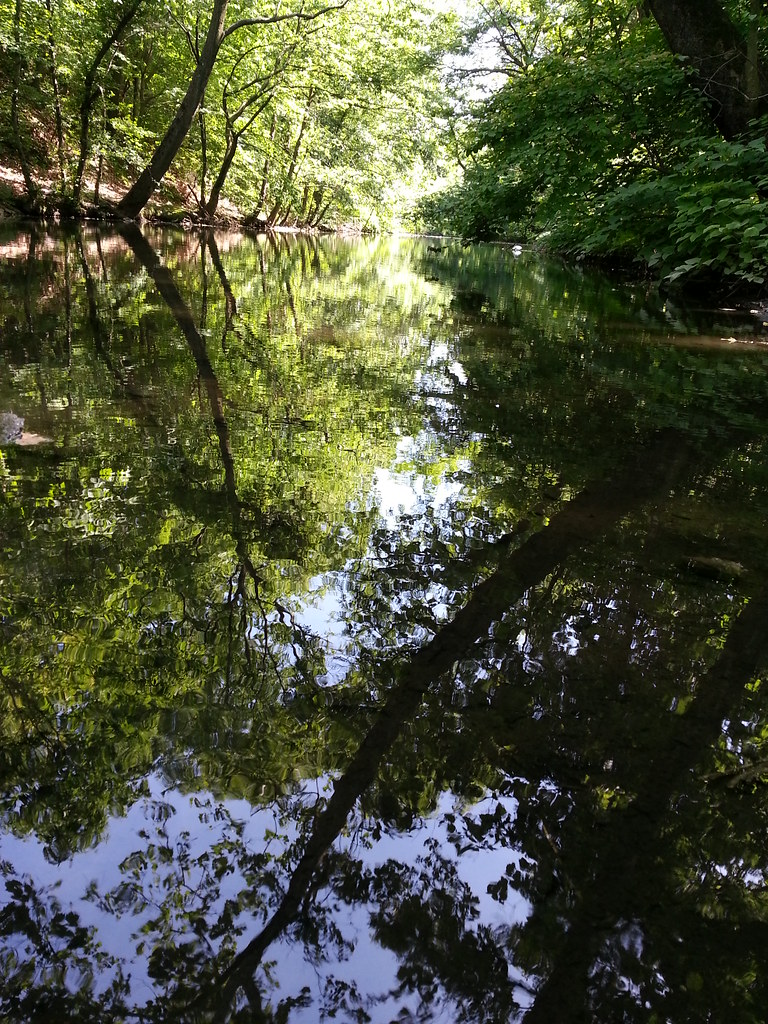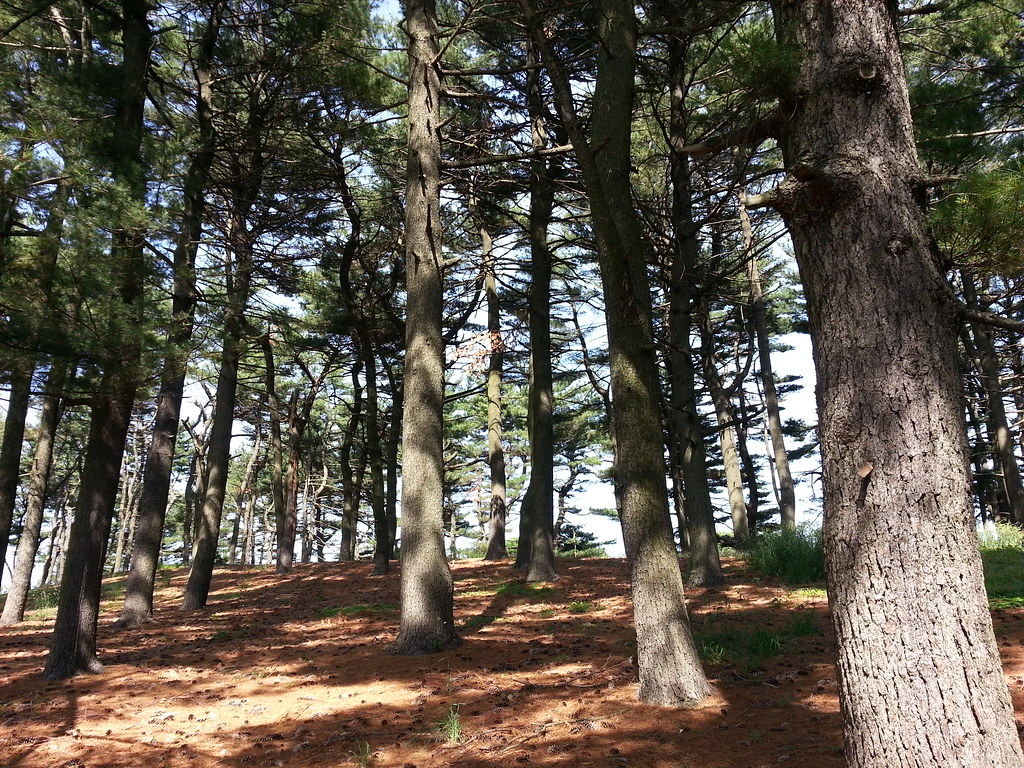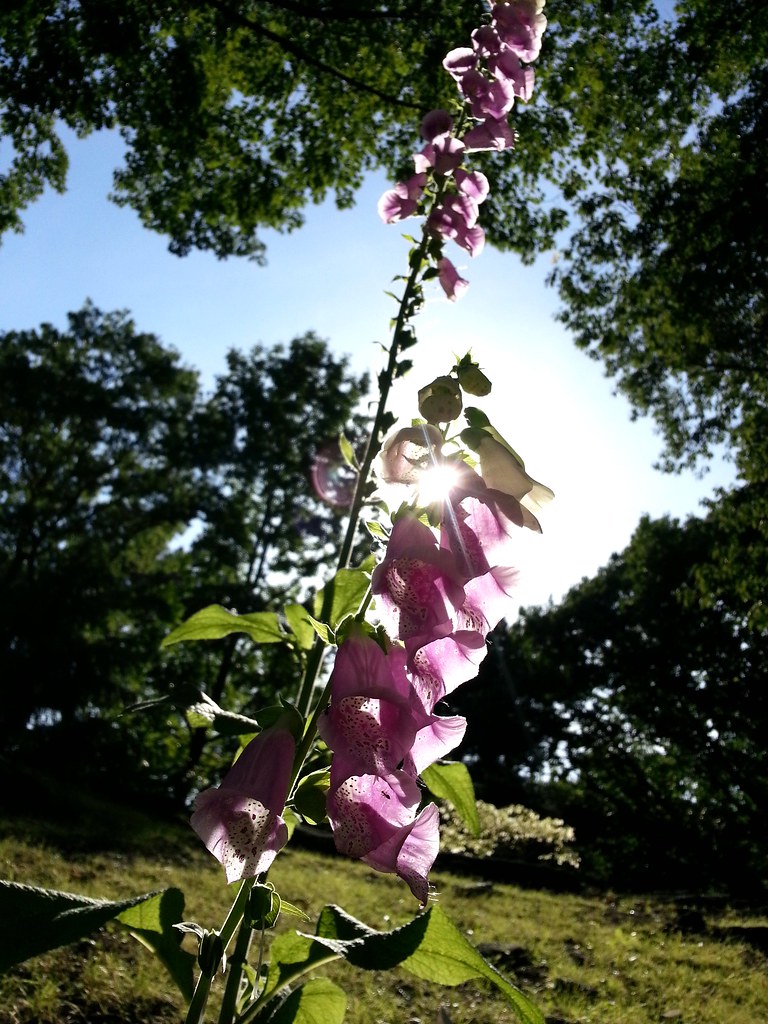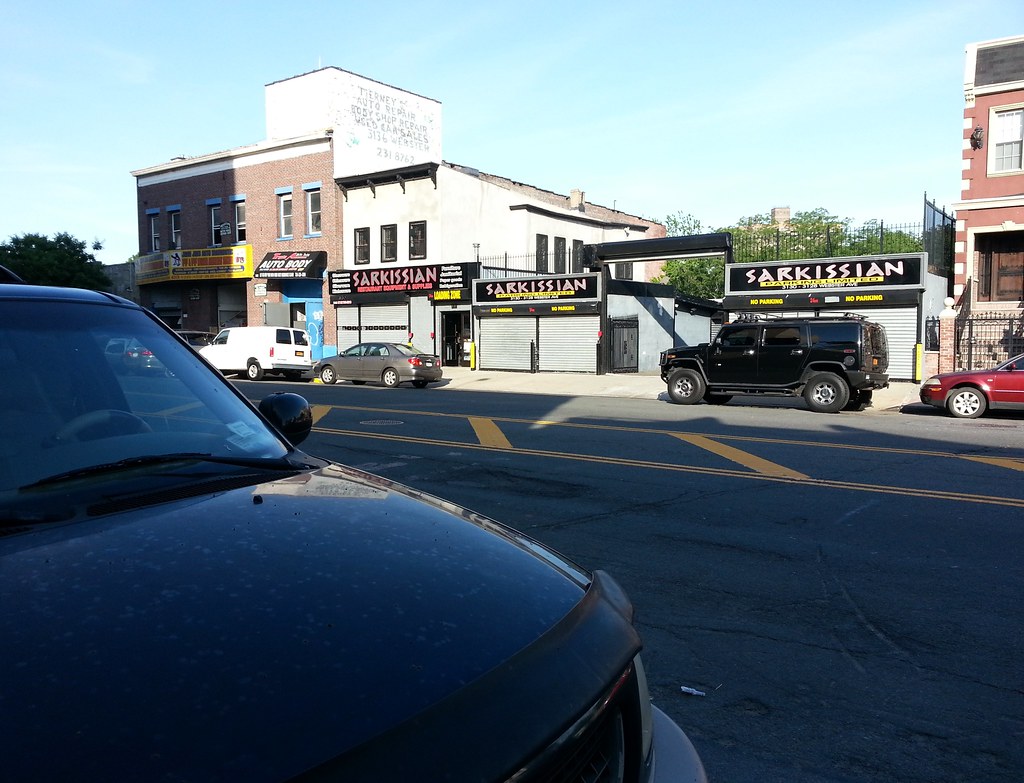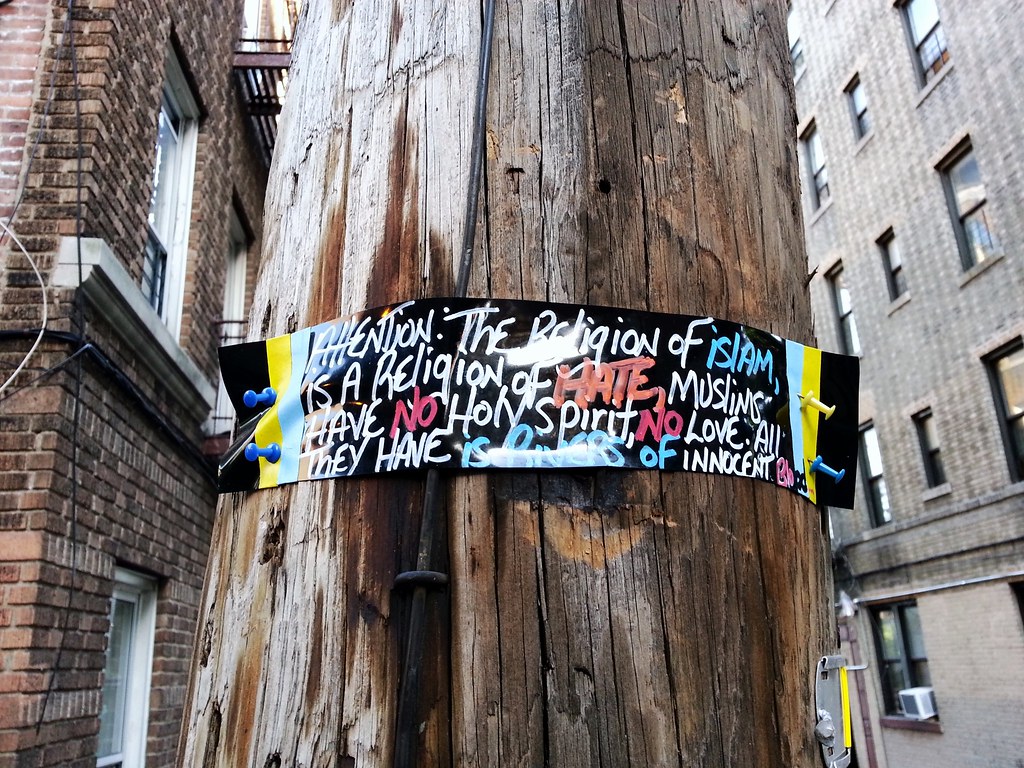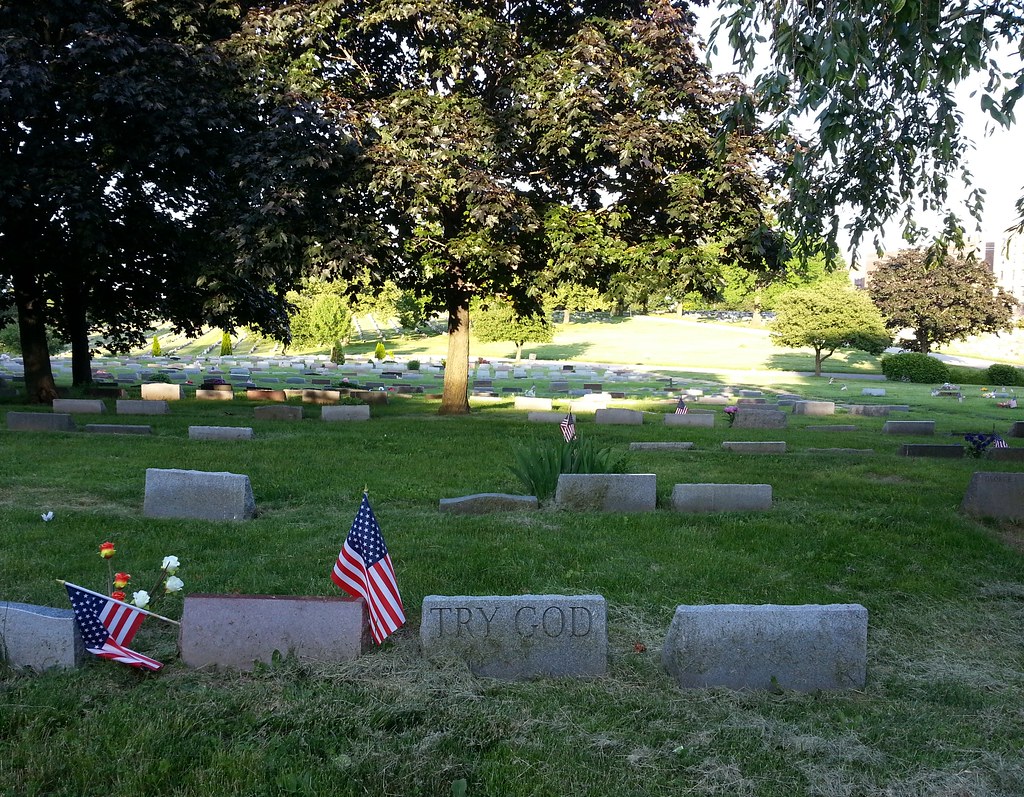
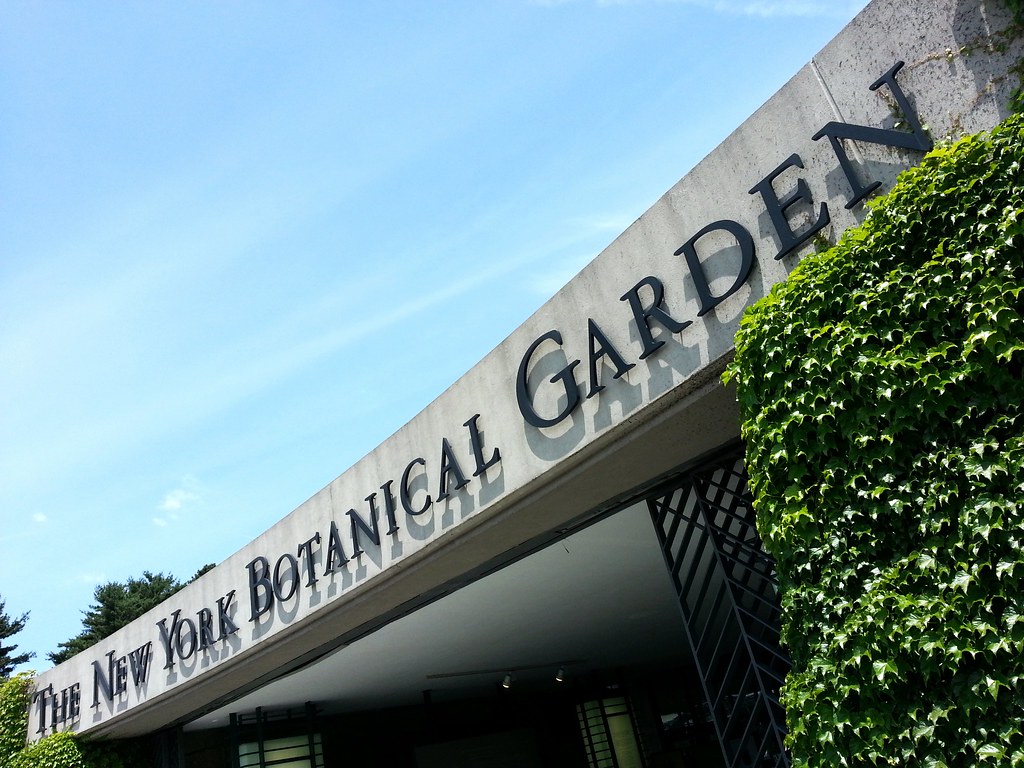
I knew from the outset of this project that I would do lots of non-street walking in parks and cemeteries around the city. Those spaces are like streets in an important way, in that they're freely open to the wandering public, at least during certain hours. I wasn't planning to include places like the New York Botanical Garden, which charge admission, effectively walling them off from what I consider the public landscape of the city. (I don't have anything against paying money to support such places; they just lie outside the scope of my walk.) However, when I discovered that (most of) the garden is admission-free on Wednesdays, I realized that I needed to include it as well.
(Perhaps you recall my brief foray into the garden on a late Sunday afternoon last December, before I had decided to incorporate the place into my walk. Normally the boundaries between public streets and big-places-you-have-to-pay-to-get-into are fairly apparent, demarcated by gates and admission booths and the like. Approaching the garden, I expected to reach a nice, obvious barrier telling me not to go any farther, at which point I would turn around and continue on my way. But things are not so clear-cut here. I ended up on a peripheral road inside the property [leading to the gorgeous Lillian Goldman Fountain of Life] without any idea of whether I was allowed to be there without a ticket. It was too late in the day to try to work a bunch of unexpected miles into my route, so I decided to come back another time to figure out which parts I needed to walk.)
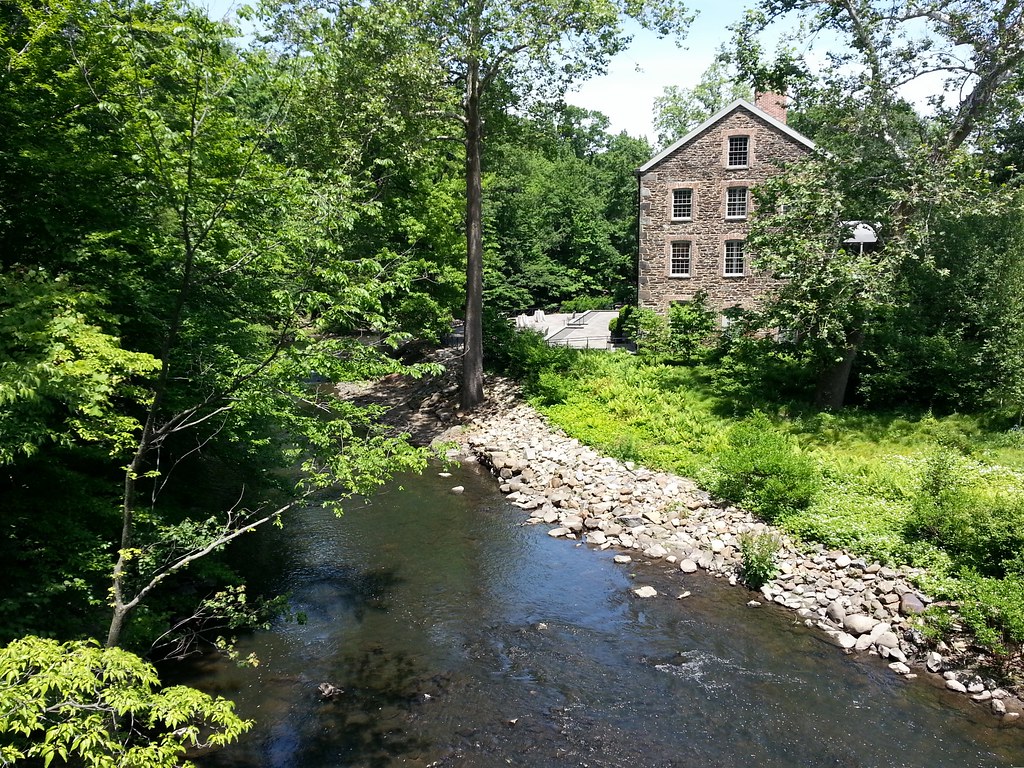
"The nation's oldest extant tobacco factory", this mill once harnessed the power of the Bronx River to grind tobacco leaves into snuff. It was built in 1840 by the Lorillard family, founders of the Lorillard Tobacco Company, which makes Newport and Kent cigarettes, among others.
Now standing on the grounds of the New York Botanical Garden, and used, in part, as an event space, the mill was rechristened the "Lillian and Amy Goldman Stone Mill" in 2010. The Goldman family was a major donor to the building's recent restoration, so I understand that part of the new name. But why did they change "Snuff Mill" to "Stone Mill"? Was it some kind of rebranding effort intended to obscure the building's undesirable tobacco-related past? (The garden's website says nothing about tobacco in its brief historical description of the structure.) Were they worried people wouldn't want to hold lucrative social events at a place with "Snuff" in the name? Or did the Goldman family just not want to be associated with tobacco?
Whatever the case, I don't like it! The caretakers of our city's historical heritage shouldn't be selectively concealing the parts of that heritage that they find distasteful or unprofitable. If the garden's board just wanted to change the building's name, that would be one thing, but I couldn't even find a mention of the mill's original use on any of the nearby informational signs, which instead told me that the building is "an irreplaceable piece of American history" and "one of New York City's most picturesque structures". The only exceptions to this historical whitewashing were a couple of old maps, still bearing the name "Snuff Mill", that were posted here and there as navigational aids. (I saw one poor fellow staring at one of these maps in absolute befuddlement, because the directions he had been given were in relation to a "Stone Mill", but he could only find a "Snuff Mill" on the map.)

Somewhere in the vicinity of the Rose Garden, which features over 600 varieties of roses, is the former site of the Lorillard family's "Acre of Roses", whose petals they used to scent the snuff that they ground in their mill.
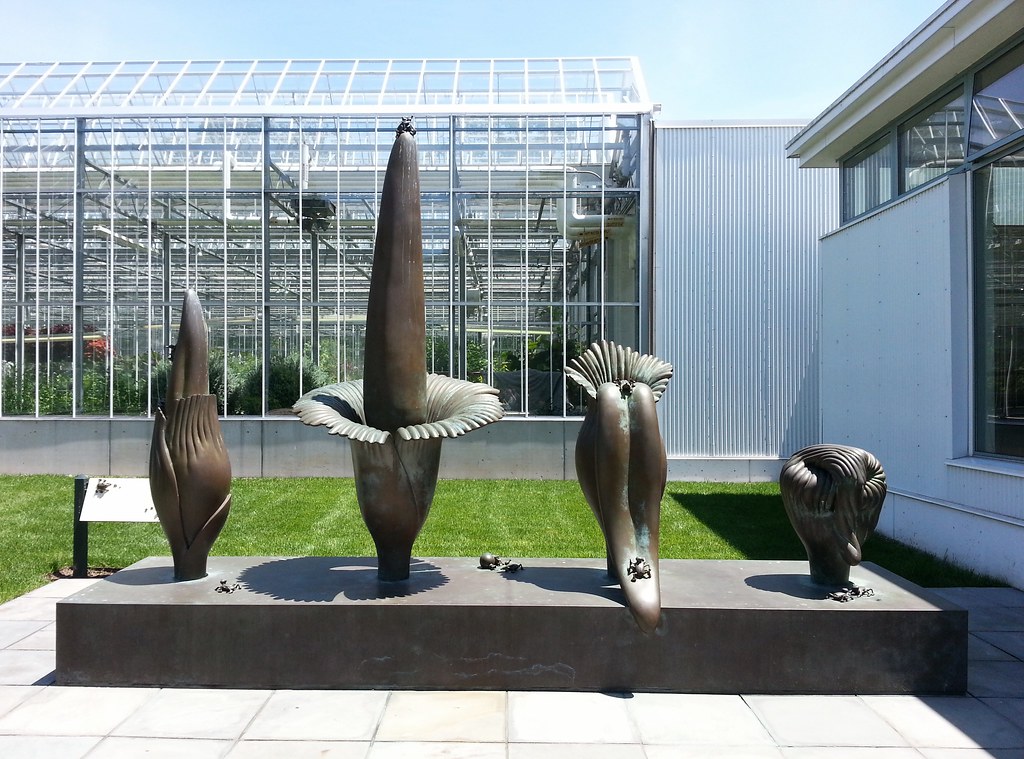
This sculpture by Tom Otterness celebrates the "giant shapeless phallus" (to translate from the Latin), or corpse flower, as it is more commonly known. This monstrous plant, which goes years between blooms (you can see photos of one blooming here), and which smells like a decomposing carcass when it does bloom, produces an inflorescence ("the largest unbranched inflorescence in the world") that can exceed 10 feet in height. Its corm, an underground organ that stores the plant's energy until it's ready to bloom again, is the largest such structure known to exist, tipping the scales, in some cases, at 200 pounds or more.
The corpse flower is native to the Indonesian island of Sumatra, but its first documented bloom in the Americas took place right here at the New York Botanical Garden in 1937. When a second one bloomed here in 1939, the Bronx borough president at the time, James J. Lyons (the same guy who planted a flag in Marble Hill and claimed it as the Bronx Sudetenland), was so impressed by the plant that he decided, on the spot, to name it the borough's official flower, a title it held until 2000, when the day lily stole its throne. (For those curious, the most recent corpse flower bloom in the city, as far as I can tell, occurred in 2006 at the Brooklyn Botanic Garden.)

Another mid-19th-century relic of the Lorillard estate. I don't know if the cottage still serves as a residence, but in 1992 it was home to one of the Botanical Garden's managers and his family, and, before that, one of the garden's vice presidents.
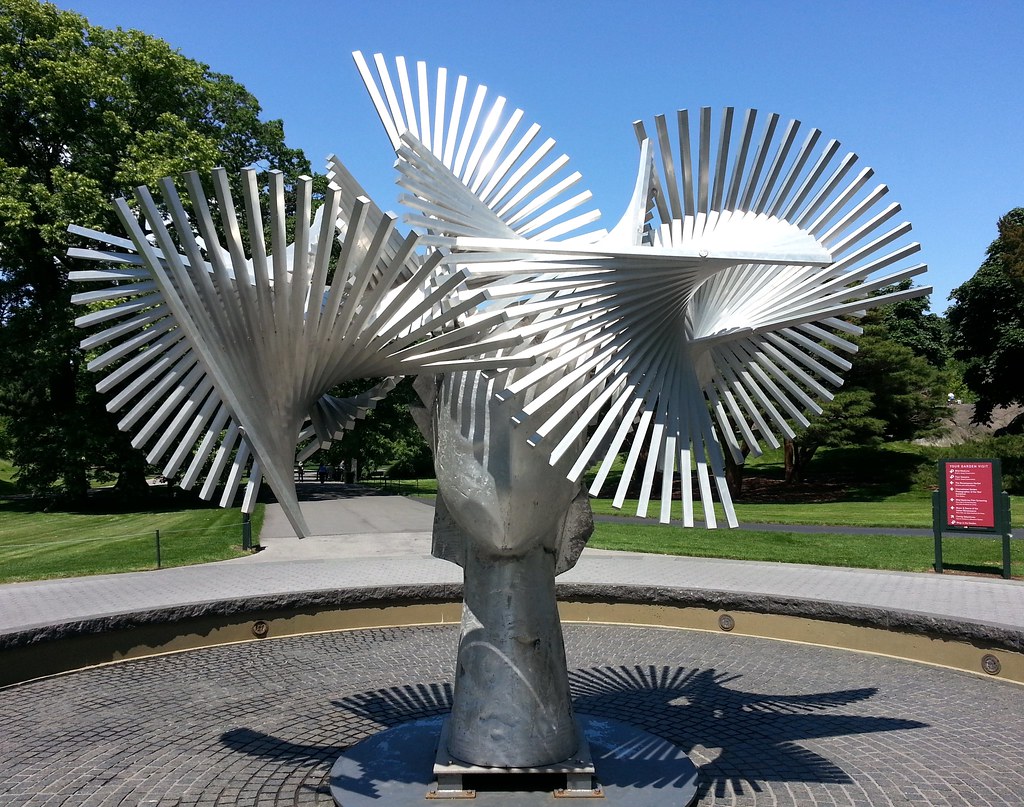
One of seven monumental sculptures in Manolo Valdés's Manolo Valdés: Monumental Sculpture (awesome name) exhibition at the New York Botanical Garden. These giant women's heads were supposedly only going to be on view until May 26, but they seem to have hung around at least an extra ten days.
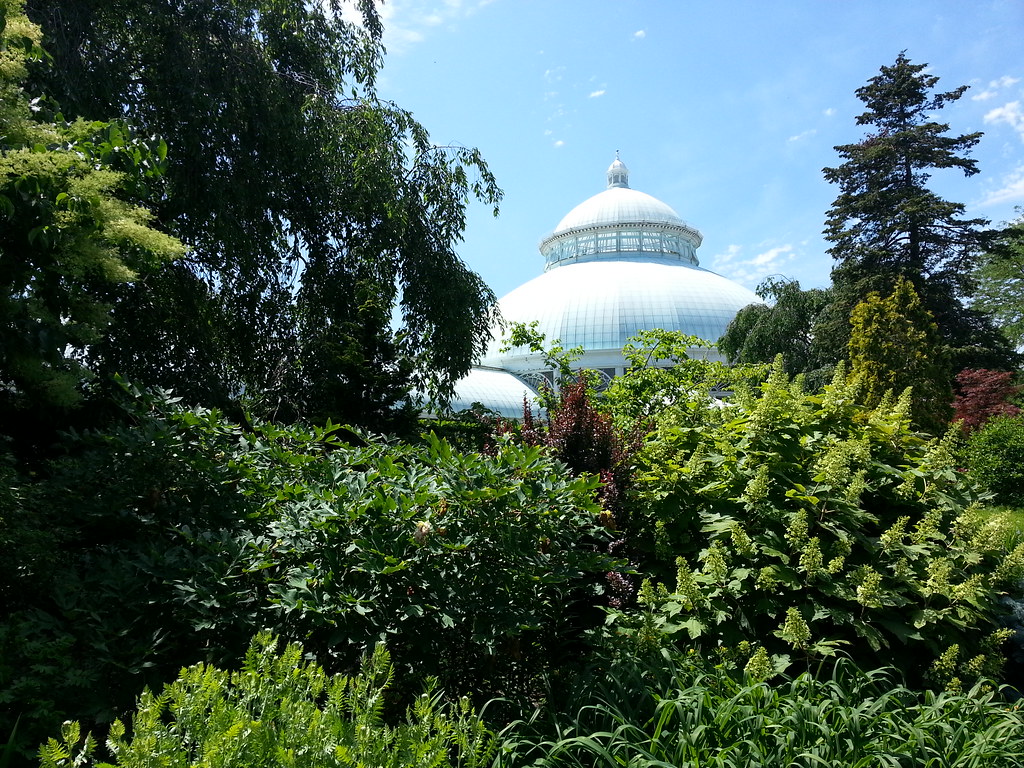
The spectacular Enid A. Haupt Conservatory (admission not included with the free grounds-only pass)

Unaffected by Dutch elm disease, this American elm lives in the very well-labeled 50-acre Thain Family Forest, "the last remnant of the 17th-century woodlands that once blanketed the region, the same woods in which the Lenape Indians hunted, with some of the same trees standing."

Tucked away off the main drag in an otherwise flowerless section of the garden is this surprising burst of color. According to a nearby sign:
In the spring of 2010 The New York Botanical Garden became host to the first EarthKind Northeast Rose Trials.
The goal of the EarthKind program is to identify cultivars that combine beauty with proven durability in the landscape. The EarthKind philosophy is based on the premise that it is possible to grow stunning roses that tolerate harsh environments without agricultural chemicals and with a reduction in irrigation. The first EarthKind trials began almost 15 years ago in the middle of a Texas field, where rosarians planted 60 different kinds of roses. Their goal was to find environmentally friendly specimens that were drought tolerant and that required little in the way of fertilizers and pesticides. To date, 21 rose varieties have succeeded in the Texas trials. EarthKind trials are currently underway in 25 states and 5 countries.
The 32 different kinds of roses here are being tested to determine the best varieties for gardens in the Northeast. In the first year of the trials, these roses will be watered, but for the next four years they will receive nothing, not even fertilizer. Those roses that survive and thrive at the end of the trial period will be designated EarthKind.
Be sure to visit the Peggy Rockefeller Rose Garden, where 20 EarthKind varieties are planted.
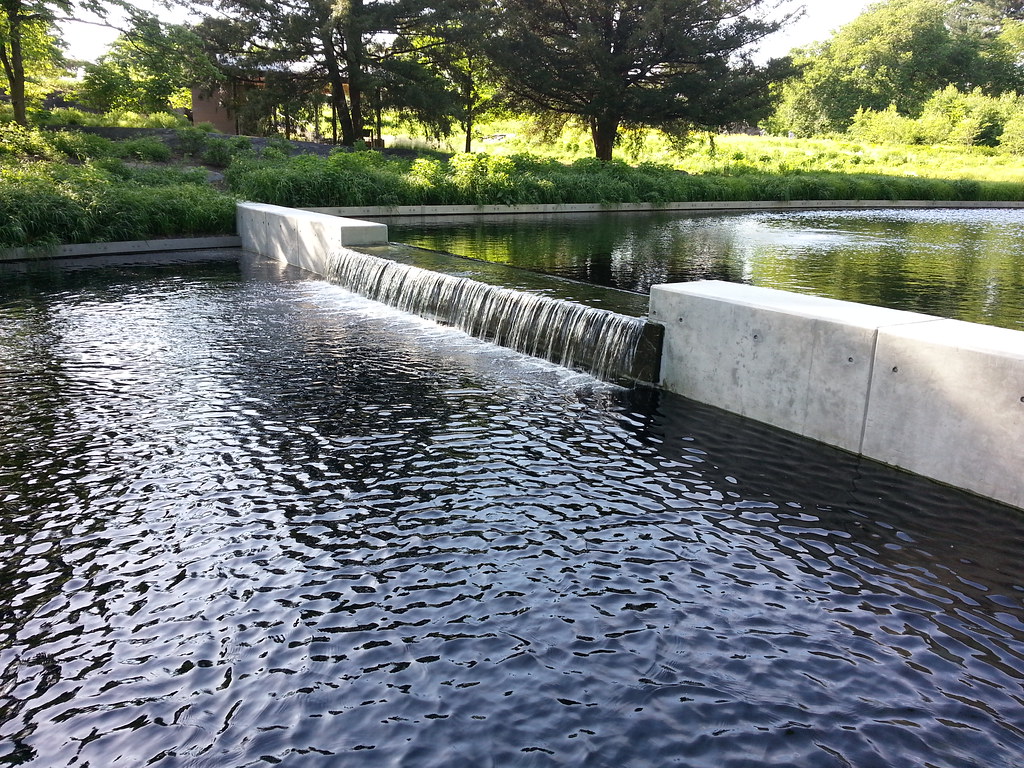
of the brand-new Native Plant Garden.
The Botanical Garden generally seems to trust its visitors, using politely worded signs, rather than imposing barriers or scolding staff members, to tell us where we're not supposed to go and what we're not supposed to do. But for some reason, out of character with the rest of the garden, there was a very stern-faced security guard stationed beside this pool, keeping a close eye on things. He seemed so serious about his mission that I'm not sure I could have even successfully sneezed into the water, much less jumped in.
In an attempt to lighten the mood, I gestured at the pool and asked him "When's swimmin' hours?" After a moment of dead silence, he responded with a rather insincere "Heh."
"Not funny, huh?" I offered. He just stared back at me blankly.
You win some and you lose some.
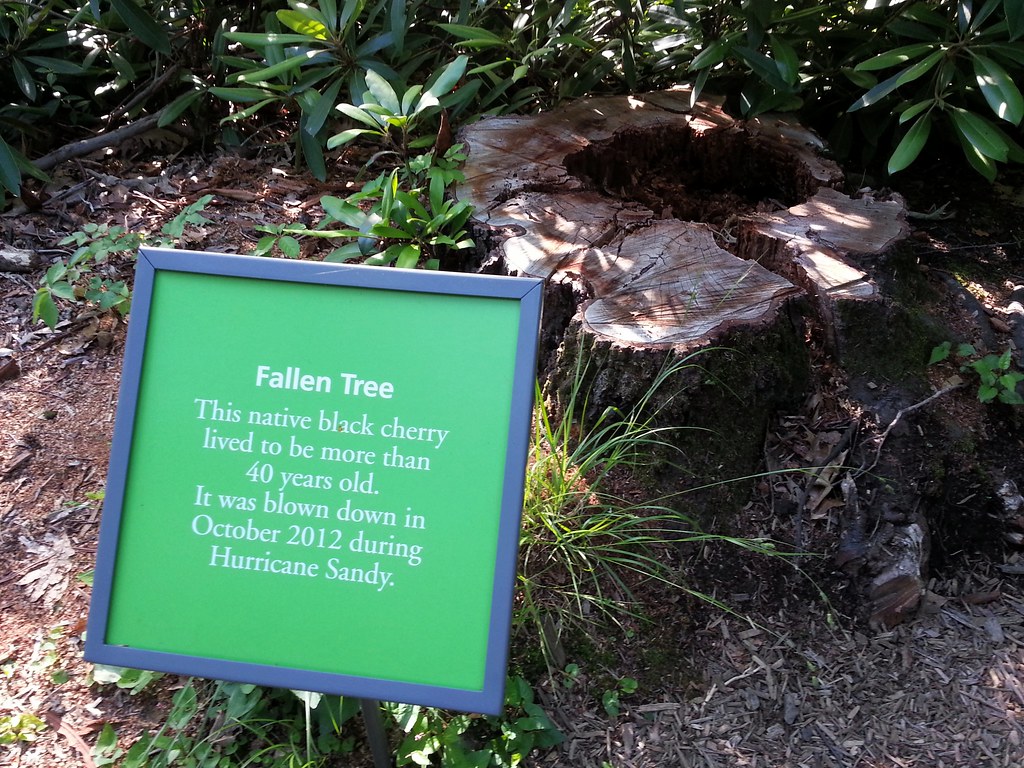
One of more than 550 the Botanical Garden lost to Hurricane Sandy
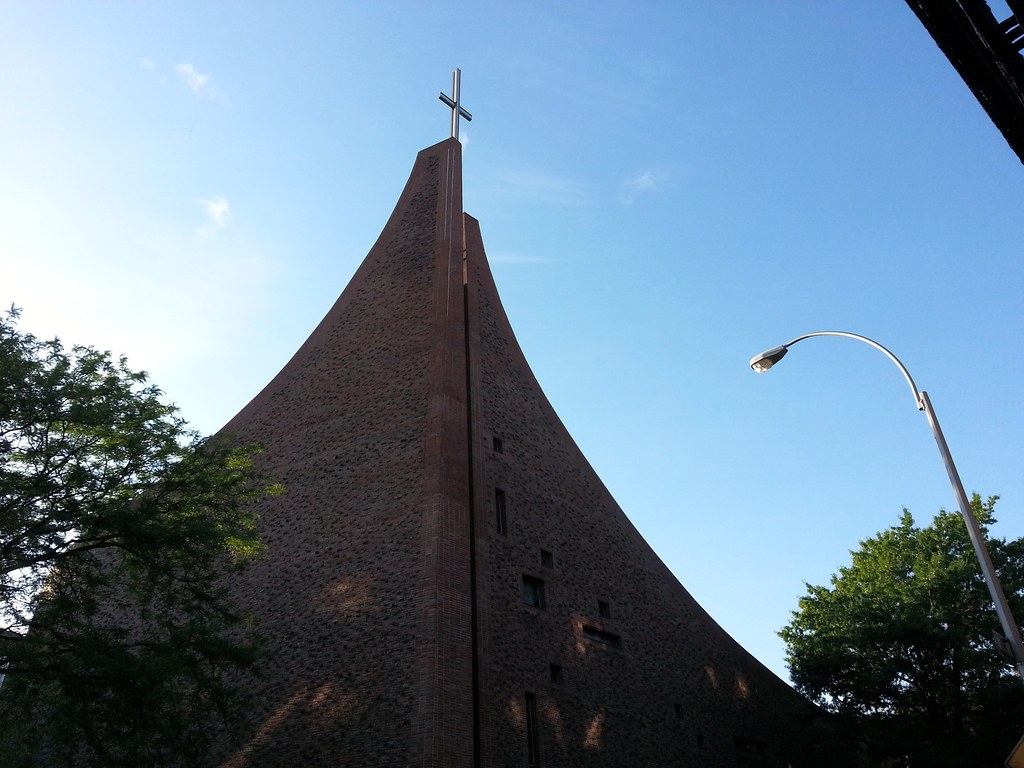
From the AIA Guide to New York City: "St. Brendan is the patron saint of navigators, so it should come as no surprise that this church was built to resemble the prow of a ship."
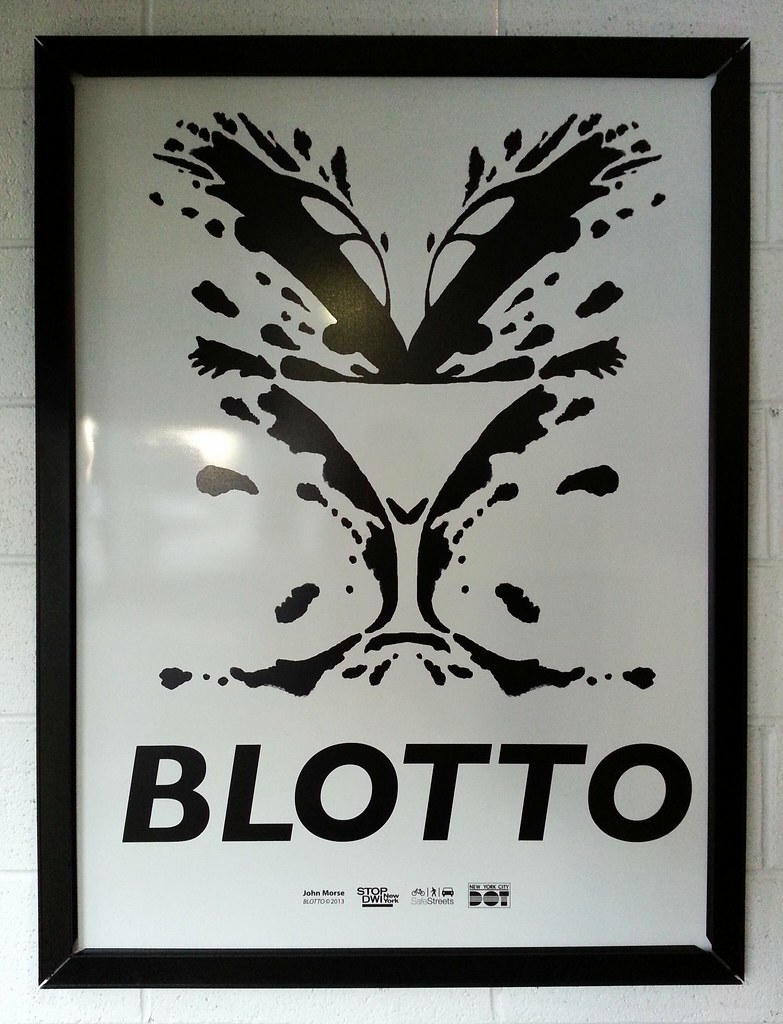
This poster is part of the city DOT's campaign against drunk driving. It was designed by the same guy who did the Curbside Haikus.
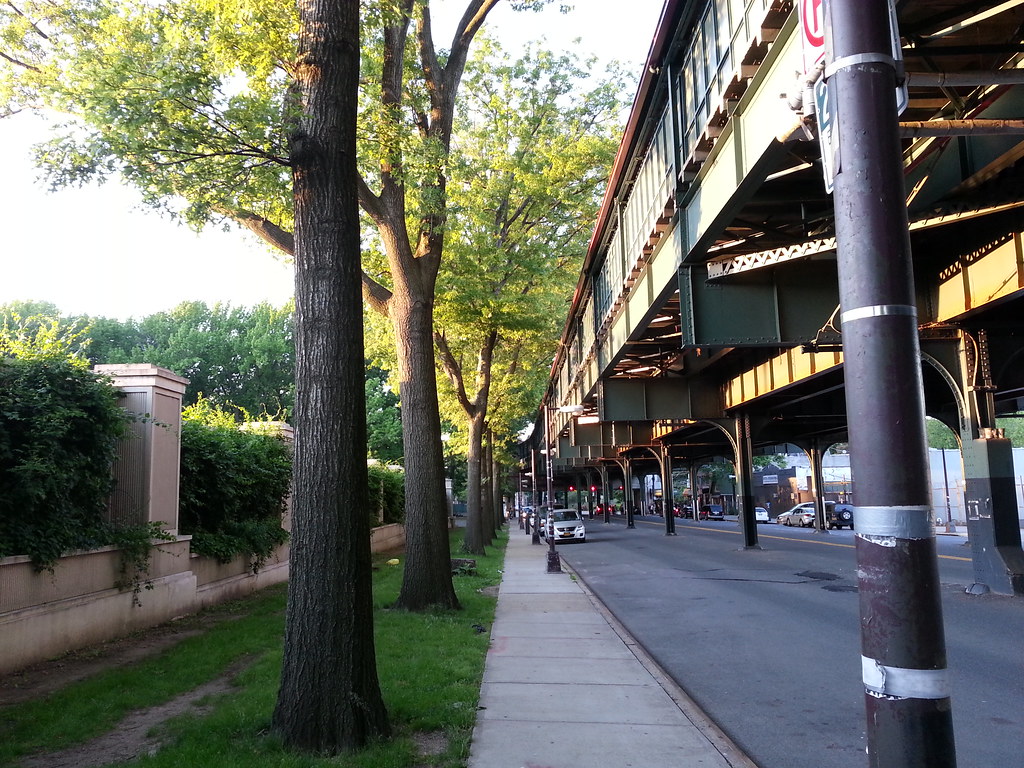
That's the 4 train's terminal station on our right.
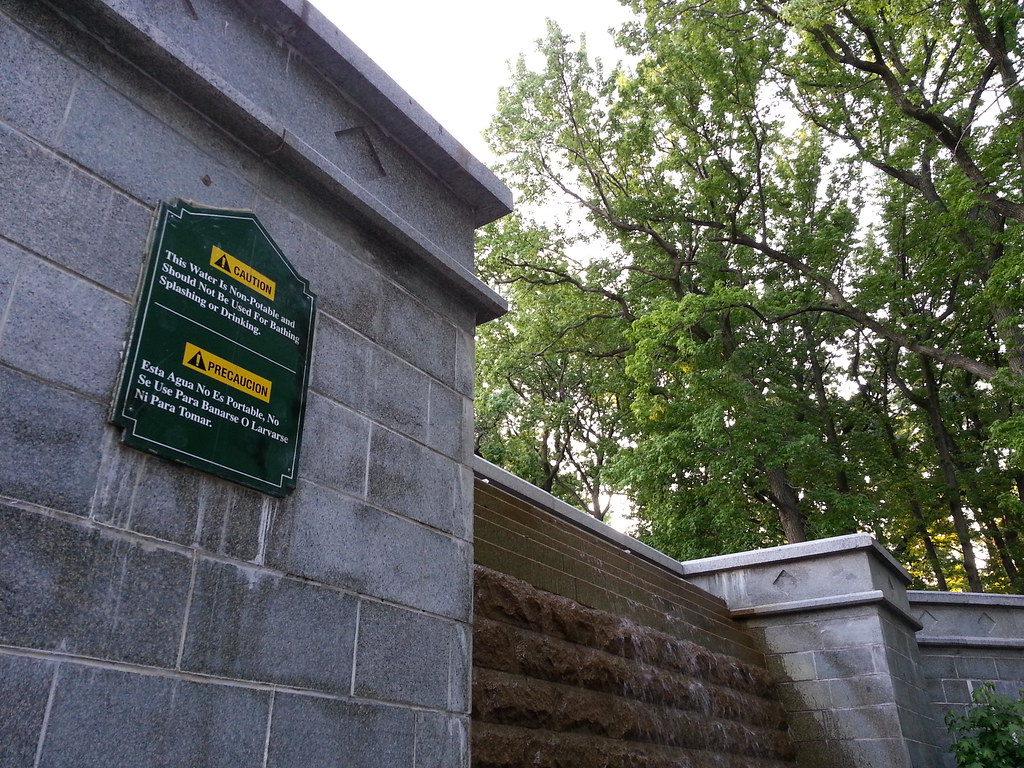
A non-potable waterfall outside the Croton Water Filtration Plant under construction (still) in Van Cortlandt Park
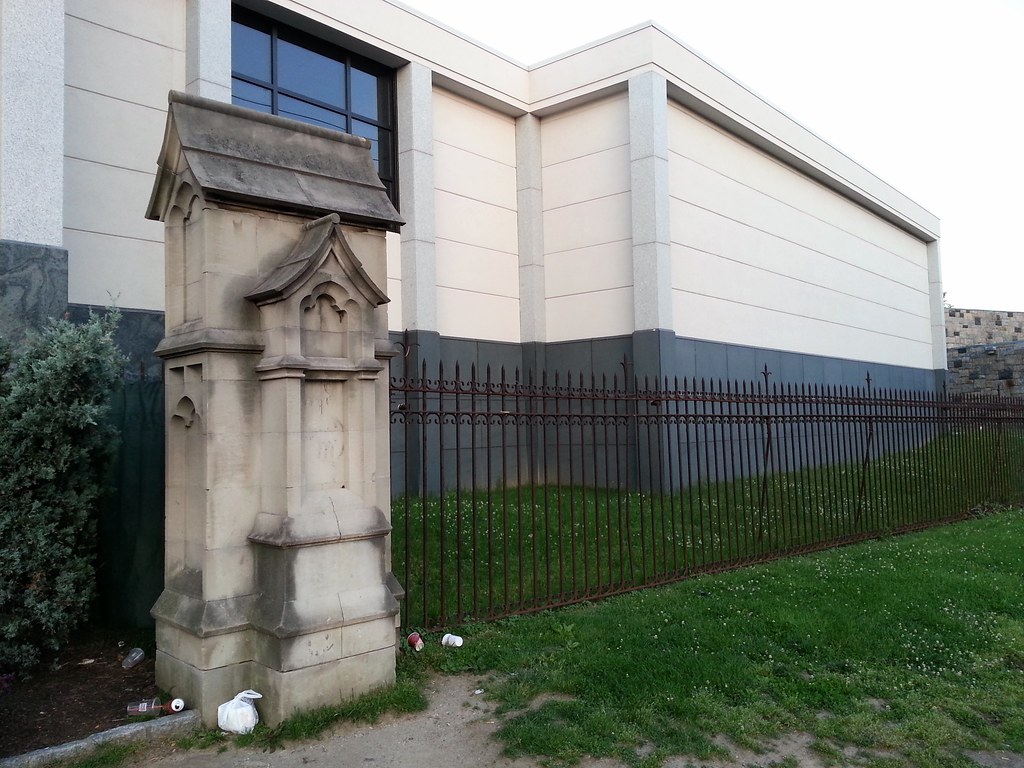
This mysterious Gothic stone pillar at the edge of Woodlawn Cemetery stands in stark contrast to the modern-looking community mausoleum built just behind it. According to the NY Times, there was once a "grand entrance" to the cemetery here at Jerome Avenue and 233rd Street. Perhaps this pillar was once part of that entrance, which was presumably demolished to make room for the mausoleum. Bolstering this theory are two facts: 1) an identical pillar is symmetrically located around the corner on the other side of the mausoleum, where the other end of the entrance would have been, and 2) parts of an existing entrance farther south on Jerome Avenue look very similar to these pillars.

